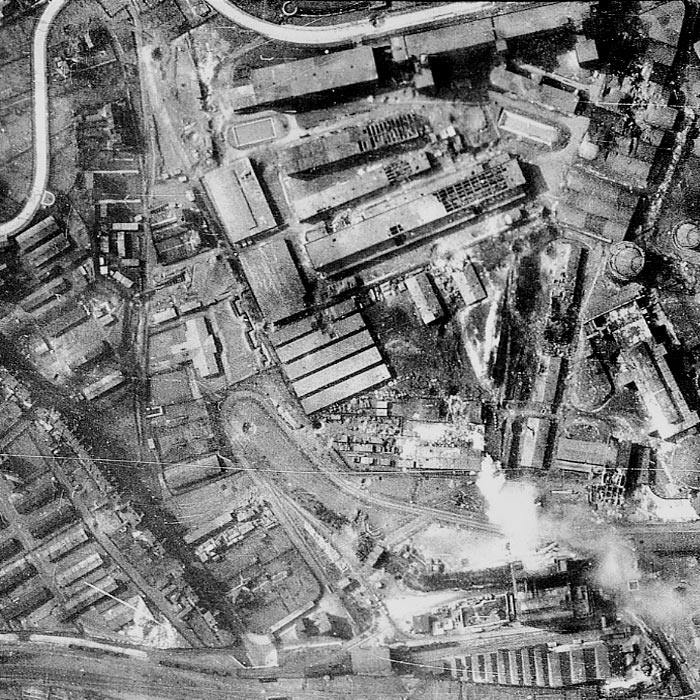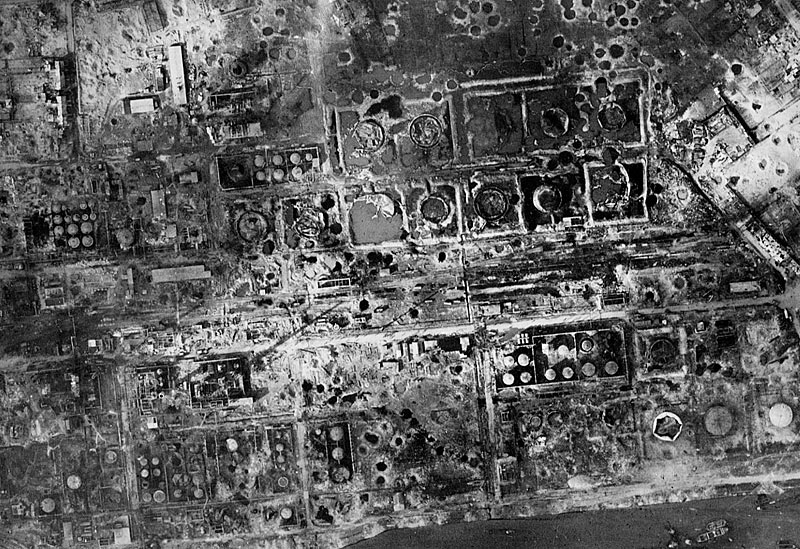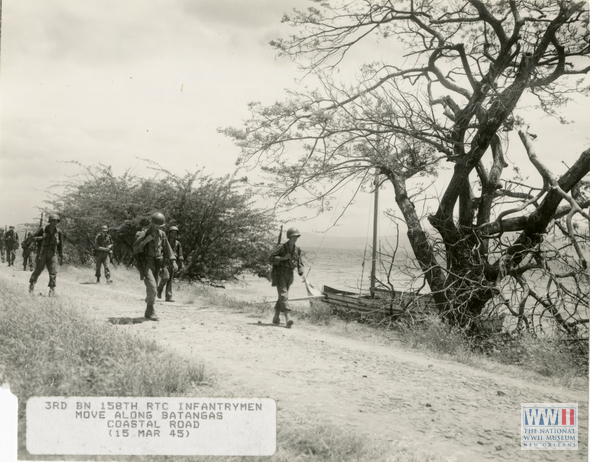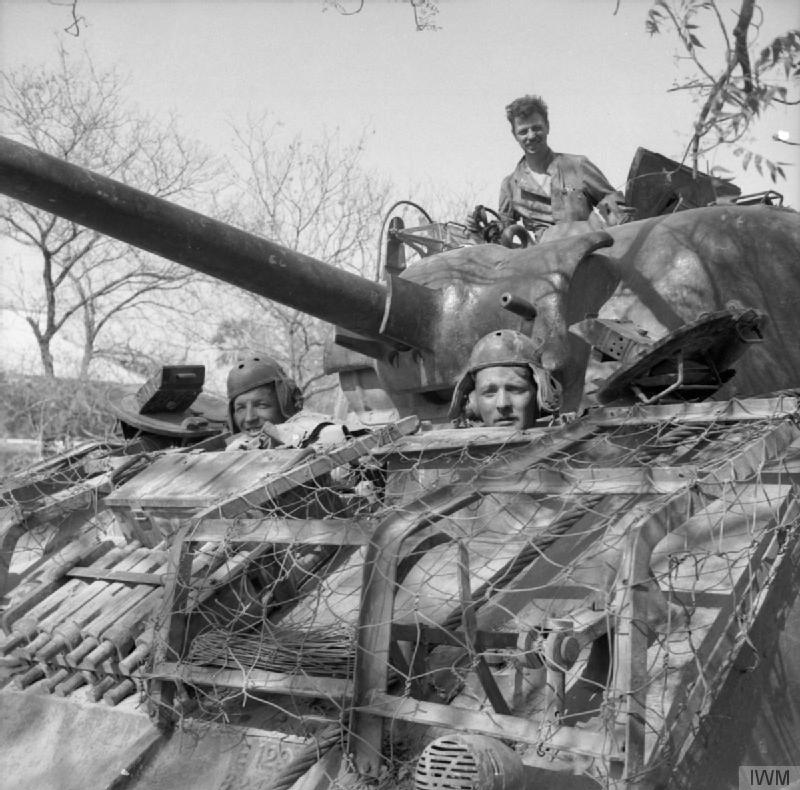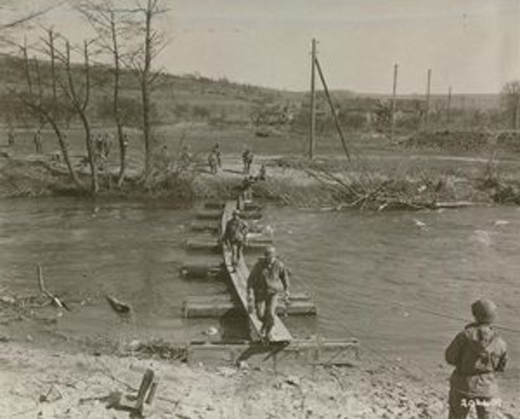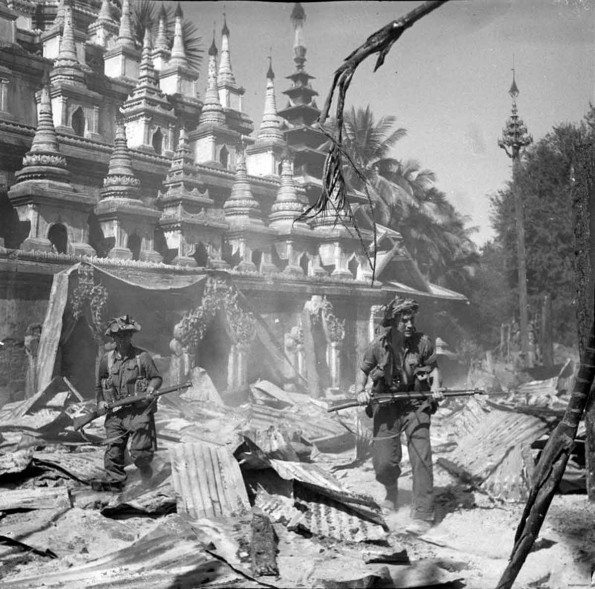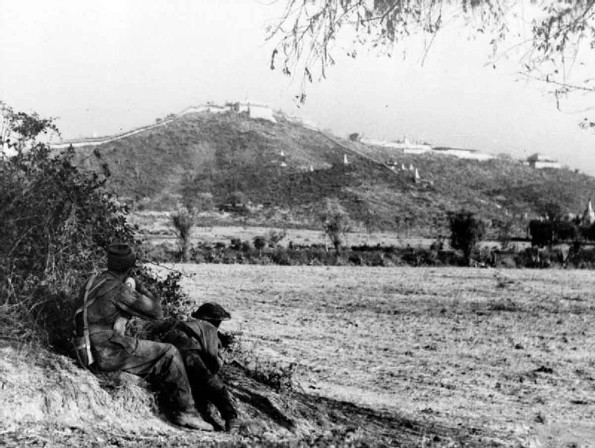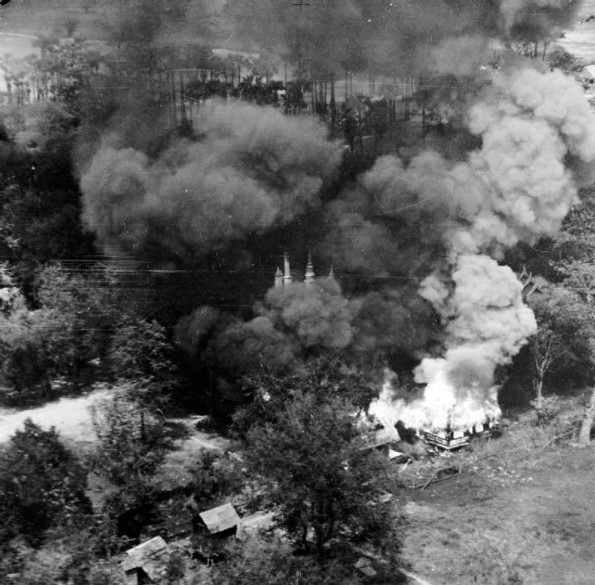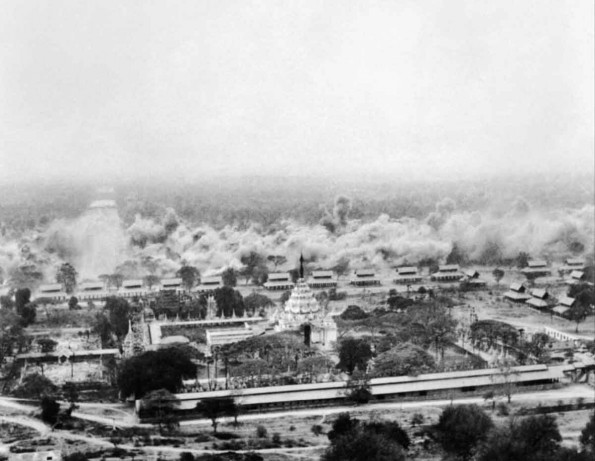Air Operations, CBI
BURMA- 32 459th Fighter Squadron P-38s sweep roads behind the Japanese Army battle lines.
- 30 10th Air Force P-47s support Chinese Army ground forces in the Namhsan area.
- 4 308th Heavy Bomb Group B-24s attack shipping in the South China Sea.
- 4 341st Medium Bomb Group B-25s attack targets near Pingsiang.
- 4 14th Air Force P-51s attack locomotives.
- 4 P-51s attack motor vehicles.
- 13 38th and 345th Medium Bomb group B-25s severely damage a cargo ship and a Japanese destroyer while sweeping the sea lanes between Hong Kong and Swatow.
- A 49th Fighter Group P-38 downs a Ki-44 'Tojo' fighter over the China coast at 1100 hours.
- 348th Fighter Group P-51s down a Ki-44 'Tojo' fighrter and a J2M 'Jack' fighter near the Kaitak airfield in Hong Kong between 1115 and 1130 hours.
- 20 2nd Air Commando P-51s Group attack the Don Maung airfield at Bangkok. 1st Air Commando and 2nd Air Commando Fighter squadron P-47s down a Ki-21 'Sally' bomber and 2 Ki-43 'Oscar' fighters over the Dong Muang airfield at 1315 hours.
Air Operations, Europe
Wehrmacht GHQ at Zossen, south of Berlin, is pounded by the 8th Air Force.
RAF BOMBER COMMANDDaylight Ops:
- 188 aircraft including 150 Halifaxes, 24 Mosquitos and 14 Lancasters of Nos. 4, 6 and 8 Groups attack oil plants at Bottrop and Castrop-Rauxel. Both raids are believed to have been successful.
- 1 Halifax of No. 4 Group is lost on the Bottrop raid.
- 16 Lancasters of Nos. 9 and 617 Squadrons attack the viaduct at Arnsberg. Two aircraft of No. 617 Squadron each carry a Grand Slam. The 14 aircraft of No. 9 Squadron carried Tallboys. The viaduct is not cut.
- There are no losses.
- 134 Lancasters, 122 Halifaxes and 11 Mosquitos of Nos. 4, 6 and 8 Groups are sent to bomb Hagen. This area attack takes place in clear visibility and causes severe damage. The local report estimated that the bomber force was 800 aircraft strong! The main attack falls in the center and eastern districts. There are 1,439 fires, of which 124 are classified as large.
- 6 Lancasters and 4 Halifaxes are lost.
- 257 Lancasters and 8 Mosquitos of Nos. 1 and 8 Groups attack the Deurag refinery at Misburg on the outskirts of Hannover. Visibility is good and some fires are started, but the main weight of the raid falls south of the target.
- 4 Lancasters are lost.
- 54 Mosquitos are sent to Berlin, 27 to Erfurt, 16 to Mannheim, and 6 each to Jena and Weimar, and there are 37 Mosquito patrols and 53 RCM sorties.
- 1 RCM Fortress is lost.
GERMANY:
- 276 1st Air Division B-17s and 308 2nd Air Division B-24s attack a German Army headquarters at Zossen, near Berlin.
- 145 1st Air Division B-17s and 467 3rd Air Division B-17s attack a marshalling yard at Oranienburg.
- 78 heavy bombers attack various targets of opportunity.
- 9 heavy bombers and 4 of 755 VIII Fighter Command escorts are lost.
GERMANY:
- Supporting the US 7th Army's Operation UNDERTONE (a ground attack aimed at breaking through the southern West Wall), the 9th Air Division mounts all 11 of its bomber groups against flak concentrations, two marshalling yards, two communications cneters, and targets of opportunity.
ITALY:
- 12th Air Force B-25s attack rail fills and bridges at six locations.
- XXII TAC P-47s attack rail targets throughout northern Italy as well as several ammo and supply dumps.
- During the night, XXII TAC A-20s and A-26s attack bridges and targets of opportunity in the Po River valley.
AUSTRIA:
- More than 470 15th Air Force B-24s attack three oil refineries in or near Vienna, a bridge at Klagenfurt, and marshalling yards at six locations.
- In the 15th Air Force's deepest penetration into Germany of the war, 109 5th Heavy Bomb Wing B-17s attack the synthetic-oil plant at Ruhland.
- 103 5th Heavy Bomb Wing B-17s attack a refinery at Kolin, Czechoslovakia (a secondary target).
Air Operations, Formosa
- V Bomber Command B-24s attack the naval base and fuel stores at Mako harbor in the Pescadore Islands.
- V Fighter Command P-47s dive-bomb a power plant at Takao.
Air Operations, Philippines
- FEAF B-24s attack Lahug.
- XIII Bomber Command B-24s and 42nd Medium Bomb Group B-25s attack troops near Sarangani Bay and troops and artillery positions near Zamboanga.
- B-24s, V Bomber Command A-20s, and V Fighter Command P-38s attack a Japanese Army headquarters near Baguio.
- A-20s and P-47s attack positions and gun positions near Batangas.
- P-47s attack a bridge at Minuli and troops in Balete Pass and near Fort Stotsenburg.
Baltic
U-367 sinks after hitting a mine in the Baltic Sea, off Danzig.
| Class | Type VIIC |
| CO | Oberleutnant zur See Hasso Stegemann |
| Location | Baltic, off Danzig |
| Cause | Mine |
| Casualties | 43 |
| Survivors | None |
Burma
In the British IV Corps sector the 17th Indian Div, cut off at Meiktila, holds out against Japanese counterattacks. A brigade of the 5th Indian Div is air-lifted to the area and the other two brigades of the division advance in that direction from Jorhat.
[Eastern Front
In East Prussia the 3rd Belorussian Front splits the German forces in two, reaching the Baltic coast southwest of Königsberg. In Hungary and Yugoslavia the Russian forces go over to the offensive.
GERMANYThe Soviet 2nd Shock, 49th, 69th and 70th Armies are fighting in the suburbs of Gotenhafen and Danzig, while at Kolberg Polish troops are battling their way through the streets. The Soviet Upper Silesian Offensive begins as the 1st Ukrainian Front attacks from Oppeln with its 4th Tank, 21st, 59th and 60th Armies.
HUNGARYSPRING AWAKENING has ended with German losses of 500 tanks and assault guns, 300 artillery pieces and more that 40,000 troops the Wehrmacht's last operational reserves.[MORE]
[Iwo Jima
The fighting continues but the Japanese forces are now mostly confined in a small area in the northwest of the island.
[Kuriles
Adm John L. McCrea leads a squadron of US cruisers and destroyers in a bombardment of Matsuwa.
[Pacific
The US submarine Bream (SS-243) is damaged by depth charges off North Borneo and is forced to terminate her patrol.
[Philippines
In the XIV Corps area the 11th Airborne and the 158th RCT begin clearing Japanese forces from the Lake Taal area. Operational control of the 6th Infantry Division and the 112th RCT passes from XIV Corps to XI Corps. The 37th Infantry Division occupies Manila under the operational control of 6th Army. The XIV Corps retains the 1st Cavalry Division as well as the 11th Airborned and the 158th RCT.
The XI Corps continues the attack on the Shimbu Group with the 38th and 43rd Infantry Divisions.
In the I Corps area the 33rd Infantry Division drives the Japanese from the high ground overlooking the Rosario-Pozorrubio Road and advances north toward Baguio and Bauang. I Corps covers the north of Luzon and has protected the flank of XIV Corps and kept the Japanese on the defensive. XI Corps has control of the center of Luzon and XIV Corps has the southern part of Luzon. The Japanese have been divided into two groups, one occupying the mountain in the northeast and the other in the mountains east of Manila. The number of Japanese killed is over 85,000 since the beginning of the campaign on January 9. During this same period 6th Army has los 18,579 casualties.
[Western Front
In the III Corps sector, US 1st Army, the 9th Div captures Lorscheid and Notscheid, while the 99th Div widens its bridgehead over the Rhine to the east and southeast. The German attacks on the American-built bridges across the Rhine are beginning to slacken. The 87th Div, VIII Corps, US 3rd Army, prepares to cross the Moselle in the Koblenz sector and, with the other formations of the corps, to capture the area between the Moselle and the Rhine. In the center and on the right of the army, the units of the XII and XX Corps continue to advance.
The US 7th Army launches Operation UNDERTONE, with which the Allied headquarters intends to make a clear breach in the Siegfried Line and, working with the 3rd Army to the north, to liberate the Saar-Palatinate triangle between the Rhine, Moselle and Lauter-Saar Rivers. 3 corps are engaged, the XXI in the Saarbrücken sector, the XV moving toward Zweibrücken, Schorbach, Bitche and Reyersviller and the VI operating on the Rothbach and Moder Rivers.
The new Commander-in-Chief of German forces in the west, Field-Marshal Kesselring, reports to Hitler on the situation on the front at the time he took over. In his opinion, although the situation is undoubtedly critical for the German troops, it will almost certainly be possible to halt the Allies if the western armies are reinforced by some picked divisions transferred from the Eastern Front after the defensive success he envisages by the Germans on the Oder.
[Images from March 15, 1945
|
|
|
|
|
|
|
|
|
|
